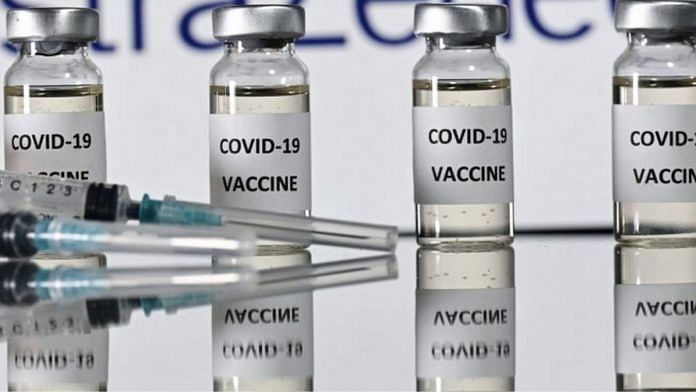New Delhi: Joint Health Secretary Lav Agarwal Tuesday denied that the Centre has any role to play in the purchase of vaccines by states.
The statement came two days after the Narendra Modi government told the Supreme Court in an affidavit that it had, in consultation with vaccine manufacturers, informed states how many vaccines they could procure based on the 18-44 years population.
In reply to a query about vaccine procurement for the 18-44 age group during the daily press briefing Tuesday, Agarwal said, “There is no role of the Centre in that. The Centre supports that … We would want to ensure no one state should take all vaccines. You see, everybody needs vaccines. It should not happen that some get it some don’t. As a facilitation … as a guidance … as an advisory … we discuss with states.”
In its affidavit dated 9 May filed in the top court, the Modi government had taken a diametrically opposite position.
“It is submitted that though the States are procuring the vaccines from the manufacturers, the Central Government has, in consultation with the vaccine manufacturers, determined the pro-rata population of each State in the age group of 18-44 and each State will procure only that quantity so that there is no disparity in availability of vaccines between the States inter-se either based upon difference in their bargaining power or otherwise,” the affidavit said.
“Each State is informed by the Central Government in writing about the number of vaccines it would receive for the month of May 2021 from the manufacturers, which would be the figure of pro-rata number of State’s population which belong to 18-44 years age group,” it added.
The matter has already come to a head in Delhi with Deputy Chief Minister Manish Sisodia alleging Monday that the state had wanted to place orders for 1.34 crore doses of vaccine from companies for people in the 18-44 age group, but the Modi government allowed only 3.5 lakh doses in May.
At the briefing, Agarwal said, “Our main focus is to give vaccines to states for priority age groups — healthcare workers, frontline workers and people above 45 years. For this, about 17 crore doses have been given by the Centre free to states. This is to reduce mortality. As an additionality (sic), there is option of direct purchase by corporates, industries, and state government and private sector individuals. States can talk to suppliers and place orders.”
Also read: Covid variant B.1.617.2 is spreading fast in India, genome data shows
More young people infected this wave
Replying to a question during the briefing, Dr Balram Bhargava, director general, Indian Council of Medical Research (ICMR) said that there are as yet no vaccines in the country that are approved for use in people aged less than 18. He also reiterated that there is no difference in the vulnerability of older age groups between the first and second waves.
“We have analysed the second wave and found that among hospitalised patients there is not much age difference between the first and the second waves. People above the age of 40 years are more vulnerable,” he said.
“In the hospitalised, the mortality is in the range of 9.6-9.7 per cent. But this wave we have found that young people are more infected. It could be because they have suddenly gone out. It is also possible that this is happening because variants are more prevalent,” Bhargava added.
‘Numbers are going down’
For the second time in two weeks, Lav Agarwal also claimed that India’s Covid numbers are showing signs of plateauing. He cited the decline from 7 May when India recorded 4,14,188 new cases, to 8 May when it came down to 4,01,078 cases to 9 May when it touched 4,03,738 and then Tuesday morning’s report of 3,29,942 cases.
He did not mention the fact that on 9 May, which was a Sunday, the testing numbers declined to 14.7 lakh from the daily average of about 18 lakh tests.
So of the two days when India reported less than 4 lakh cases, only one day was the testing at the level of the daily average of the past week.
Agarwal spotted another “declining trend” — on 5 May, cases were 3,82,315, down from 3,92,488 cases on 2 May, which he said was “positive news”. Within two days of that claim, though, India hit its highest daily tally so far — 4,14,188 cases.
Currently, there are 27 states in the country with over 15 per cent test positivity rate and 13 states with over one lakh active cases.
Also read: Delhi, Gurugram labs barred from repeat RT-PCR tests for Covid patients, aim is easing burden






